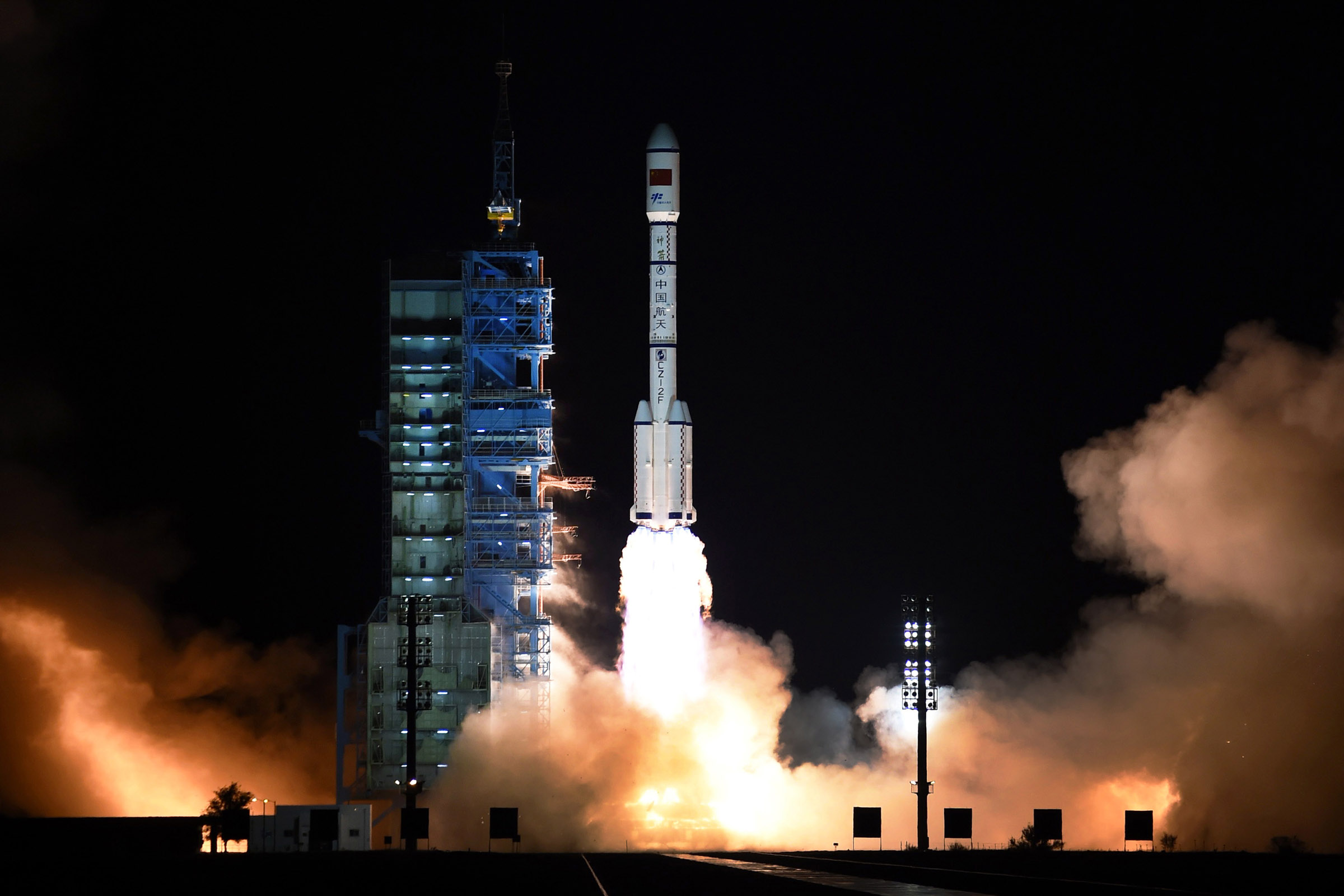WATCH: China’s launch of the Tiangong-2 space lab

At the Jiuquan Satellite Launch Center in northwest China’s Gansu Province, the last round of checks were made and the Chinese Tiangong-2 space lab successfully launched atop a Long March 2F carrier rocket on September 15 at 22:04 (BJT).
CCTV’s Guan Yang Reports.

China launched its second space station in a sign of the growing program that intends to send a mission to Mars in the coming years.
Plans call for the launch next month of the Shenzhou 11 spaceship with two astronauts to dock with the station and remain on board for a month. The station, whose name means “Heavenly Palace,” is considered a stepping stone to a mission to Mars by the end of the decade.
On the eve before the launch, CCTV’s Guan Yang reported from the Jiuquan Satellite Launch Center.

Like its predecessor Tiangong-1, Tiangong-2 is an orbiting space lab – but this latest model has made several improvements in the series. Among the advances: astronauts can remain on the station up to 30 days; New systems allow in orbit refueling of propellant; and 14 new experiments in a wide range of sciences.
Some of the scientific research will include:
- Composite material fabrication
- Advanced-plant cultivation
- Gamma ray burst polarization
- Fluid physics
- Space-to-earth quantum communications
The space lab is also equipped with a cold atom space clock, that has an estimated precision of 10 to the power of minus 16 seconds. This essentially means accuracy of the clock is within a one-second error every 30 million years. This exactitude will help measure previously undetectable fluctuations for experiments conducted in zero-gravity.
“The clock is of the world’s leading technology to enhance time-keeping in space by one to two orders of magnitudes,” says Wu Ping.
The Tiangong-2 is part of an important series of working prototypes that “will be part of the interim achievement of China’s space station mission,” said Wu Ping, deputy director of China Manned Space Engineering Office.
On the goal of the space lab mission, Wu said, “The main purpose of launching Tiangong-2 space lab is to receive the visit of the Shenzhou 11 manned spacecraft and to accomplish a medium-term stay of the astronauts.”
Once the Tiangong-2 establishes a stable Earth orbit at a distance of 393 kilometers, it will be ready to dock with manned spacecraft and commence experiments. The Shenzhou 11 mission has already been scheduled for mid-October.
The launch of Tiangong-2 coincides with China’s lunar Mid-Autumn Festival, which falls on September 15 this year.
The Chinese word Tiangong translates to “heavenly palace.”
What do you think are China's future ambitions in space? #SpaceChina
— CGTN (@CGTNOfficial) September 13, 2016
John Horack discusses China space program
For more on China’s space program, CCTV America’s Elaien Reyes spoke to John Horack, the Neil Armstrong Chair in Aerospace Policy from the Ohio State University.
Yang Yuguang discusses China’s space industry
To further discuss China’s space industry, CCTV’s Michelle Makori spoke with Yang Yuguang, professor in China Aerospace Science and Industry Corporation (CASIC).
Yang Yuguang on China’s space program and accomplishments
To talk more about China’s space program and its accomplishments and successes, CCTV America’s Mike Walter interviewed Professor Yang Yuguang from China Aerospace Science and Industry Corporation.
Sources: CCTV News, Xinhua, and the Associated Press.
 CGTN America
CGTN America



